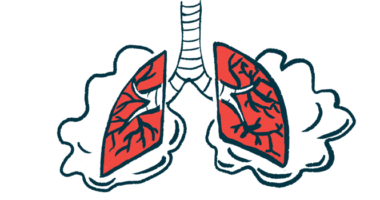Rituximab treatment effective in combined CAD, autoimmune disease
Researchers called man's case 'challenging and potentially life-threatening'

A man with rheumatoid arthritis and cold agglutinin disease (CAD) achieved complete remission following treatment with rituximab, an antibody-based therapy commonly used off-label for CAD, a recent case study indicates.
Rituximab therapy also treated the man’s cooccurring immune thrombocytopenia, an autoimmune disorder marked by the destruction of platelets, which are, cell fragments that play an important role in blood clotting.
“These findings highlight the potential efficacy of rituximab in managing this challenging and potentially life-threatening combination of autoimmune diseases,” the researchers wrote. The case study, “Successful rituximab treatment in a seronegative rheumatoid arthritis patient with concurrent cold agglutinin syndrome and immune thrombocytopenia,” was published in Rheumatology International last month.
CAD is caused by self-reactive antibodies called cold agglutinins, which bind to red blood cells at low temperatures, causing them to clump together or be marked for destruction. The process triggers a part of the immune system known as the complement cascade and leads to the breakdown of red blood cells.
“However, [CAD] complicated by [immune thrombocytopenia] is extremely rare and there has been no report of [CAD] and [immune thrombocytopenia] coexisting in a patient with [rheumatoid arthritis]. This makes our case report distinct and noteworthy,” the researchers wrote.
Rituximab targets and reduces the number of B-cells, a type of immune cell that are responsible for producing the self-reactive antibodies that cause CAD symptoms. Rituximab is approved in the U.S. for many autoimmune conditions, including rheumatoid arthritis. Using it is considered a first-line therapy for CAD.
A CAS diagnosis
The case study details a 67-year-old man who was admitted to hospital with bleeding in the soft tissue that lines the inside of his mouth, including his cheeks and lips. He had low levels of platelets in his blood, along with small red or purple spots on his extremities, called purpura.
Three years earlier, the man had been diagnosed with rheumatoid arthritis, a chronic inflammatory condition that causes painful and stiff joints, which was well managed. After his admission, doctors found unusually high levels of cold agglutinins in his blood. A direct Coombs test, commonly used in diagnosing CAD, was positive for complement proteins attached to red blood cells, a sign his immune system was attacking his red blood cells. He was diagnosed with cold agglutinin syndrome (CAS), a definition used when CAD develops secondary to other conditions.
Other abnormal blood parameters, including low levels of platelets and high antibody levels, led to an additional diagnosis of immune thrombocytopenia.
Doctors attempted to treat the man’s CAS and immune thrombocytopenia with corticosteroid medications, the first-line treatment for immune thrombocytopenia. He also received platelet transfusions and intravenous immunoglobulin therapy to neutralize the self-reactive antibodies. This combination didn’t lead to sufficient improvements in either the immune thrombocytopenia or CAS.
Some improvements were seen in his platelet count, but the man required repeated platelet transfusions. Also, the levels of hemoglobin, the protein in red blood cells that carries oxygen, further decreased while he was receiving these treatments, indicating worsening anemia.
Treating condition with rituximab
The man was started on weekly rituximab for four weeks, which led to marked improvements in his low platelet levels and anemia. He was able to discontinue corticosteroids and received two doses of rituximab every six months as maintenance therapy.
While maintenance therapy is considered suitable for rheumatoid arthritis, it hasn’t been previously established as a treatment for cooccurring CAD and immune thrombocytopenia.
“For [rheumatoid arthritis], fixed-interval [rituximab] maintenance therapy has shown to maintain low disease activity … suggesting that maintenance treatment is beneficial. However, there is no established consensus on [rituximab] maintenance therapy for either CAD and [immune thrombocytopenia],” the researchers wrote. “To establish a more definitive treatment strategy, more accumulation of cases is necessary.”
At his last visit, the man had been in remission from his autoimmune conditions for two years. No adverse events were observed during this period.
The researchers also reviewed published data from seven cases of coexisting CAS and/or ITP and rheumatoid arthritis where rituximab was used. In all the cases, rituximab was effective in inducing clinical remission for autoimmune cytopenia and rheumatoid arthritis, without causing any side effects.
“We present the first case of [a rheumatoid arthritis] patient complicated with [CAS] and [immune thrombocytopenia], which was effectively treated with [rituximab] … [This] case highlights the potential efficacy of [rituximab] for this complicated and life-threatening condition,” the researchers wrote.






